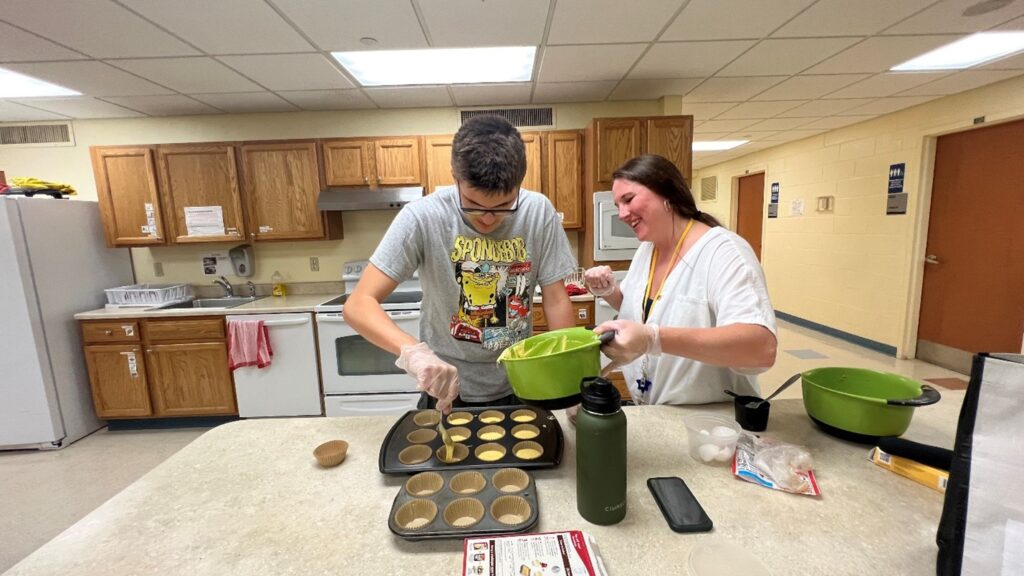Building Lifelong Skills in the Brookville Center Model Apartment
The model apartment at the Children’s Education Center is part of the curriculum for school-age students preparing for the transition to adult services. The model apartment is situated on the lower level of the Center’s Cissy Birnbaum Building. It’s a large space equipped with a full-size kitchen, laundry, bedroom, and closet area serving as a small market where students “shop” and fulfill orders.
 Students use the model apartment along with community engagement activities to build on the skills that will serve them throughout their lives. From ages 14–21, students start transition services and work on goals in their Individual Education Plan (IEP).
Students use the model apartment along with community engagement activities to build on the skills that will serve them throughout their lives. From ages 14–21, students start transition services and work on goals in their Individual Education Plan (IEP).
Over seven years, students learn skills of independence that will help them participate in the world as much as possible. There, they also practice caring for themselves and their space as well as pre-vocational tasks needed take the next steps into their future.
The Children’s Education Center has around ten transitional classes that serve 65–70 students.
All transitional students get model apartment time. Depending on the tasks assigned, students get up to two hours in the apartment to work on different skills. They do so twice a week, each time getting a little better with their activity.
Teachers also use the apartment to help students with activities of daily living (ADL). These can include the fundamentals of meal preparation, home maintenance and critical thinking.
“Because of the model apartment, we can help the students with life skills as well as the soft skills that we typically overlook,” said Transitional Program Coordinator Patti Edwards. “They get a sense of accomplishment knowing when a job is done.”
In the bedroom, students practice making their bed, folding, and putting clothes away in a closet.
During lessons, teaching assistants can shift their student’s focus by having them put their “dirty” clothes in the wash instead of the closet to encourage critical thinking. This signals them to check that the clothes they are putting away are both clean and dry before placing them in the closet.
The heart of the model apartment—like in most homes—is the kitchen, where classes prepare food and baked goods that they will use to sell in their snack cart and school store.
The snack cart and school store are run by separate classes, each overseeing their makeshift business for the duration of the school year.
Overall, the work accomplished by the students in the model apartment and throughout the transitional period helps them develop skills including cooking, money handling, budgeting, communication, time management.
The start of a child’s transitional period goes hand and hand with a transitional meeting offered to parents to help them navigate life for their children after graduation.
During the meeting, the transition coordinator and school social workers discuss the options available for their child in adult services.
“We want parents to get all the practical information they need to be able to navigate their child’s transition into the world with peace of mind and a hopeful future,” said Patti.
“We want them to know anything that can help them.”
While the transition period can be overwhelming, BCCS wants parents to feel empowered to make the decisions that will work best for their families. For more information, be sure to view our Transition Services Guide here.
